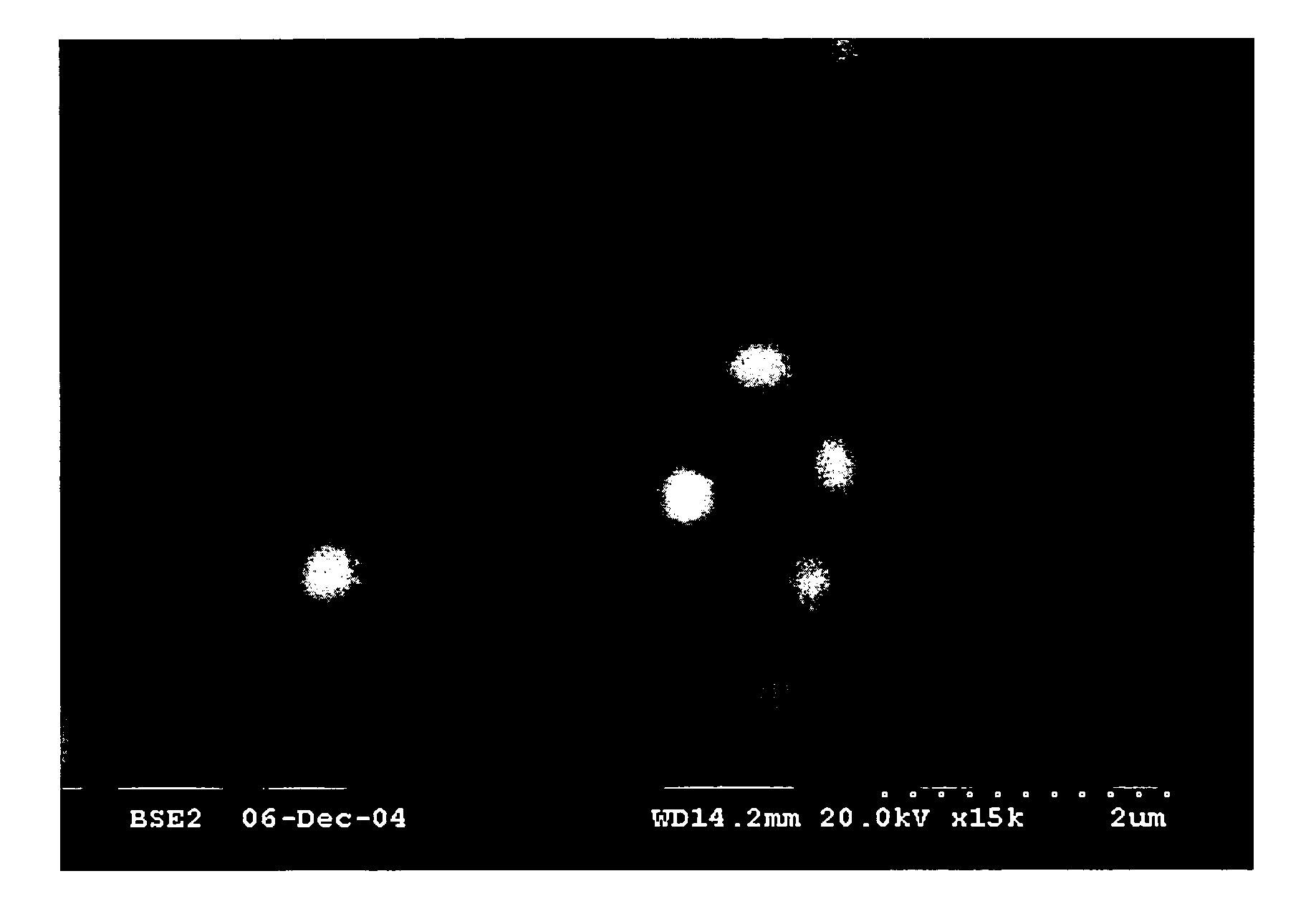Hydrophobic silica particles and methods of making same
- Summary
- Abstract
- Description
- Claims
- Application Information
AI Technical Summary
Benefits of technology
Problems solved by technology
Method used
Image
Examples
example 1
[0136] The Effect of TEOS:PTEOS Ratios on Incorporation of Ethidium Bromide and Dyes
[0137] The present example was performed using the method as detailed above, with ratios of TEOS:PTEOS varying from about 1:0, 0.9:0.1, 0.8:0.2 and 0.7:0.3. Ethidium bromide, crystal violet, bromothymol blue and analogs of rhodamine were used to test the mechanism for effective dye incorporation.
(i) Ethidium Bromide (EtBr)
[0138] Ethidium Bromide (FIG. 5A) is used extensively as a fluorescent marker for DNA with which it forms a highly fluorescent complex due to its intercalation between base pairs of the DNA α-helix. Such intercalation results from a combination of strong hydrophobic bonds between the planar base pairs within the interior of the DNA chains and the planar aromatic rings of the dye, and electrostatic bonds between the negatively charged phosphate groups of DNA and the positively charged group of the dye. The planar aromatic phenyl groups of PTEOS form hydrophobic interactions with ...
example 2
[0141] The Effect of APTES on Incorporation of Dyes into TEOS / PTEOS Sol Gels
[0142] The present example was performed using the above method for the preparation of TEOS:PTEOS particles. In addition, the same dyes were used, but APTES was incorporated into the monomer mixture. Here, a ratio of about 3:3:6 of PTEOS:APTES:TEOS was used (about 1.25 ml: 1.25 ml:2.5 ml) instead of the usual (about 2.5 ml:2.5 ml) PTEOS:TEOS ratio. The dyes used were fluorescein, thiazole orange, oxazine perchlorate, methylene blue, basic yellow 40 and basic red 28. In addition, two types of rhodamine were used, rhodamine B and rhodamine 6G. In each case, the dye-doped particles were isolated as ground and sieved microparticles.
[0143] A wide variety of stable dye-doped particles were formed. In each case, the dyes were incorporated into microparticles from aqueous solutions, using the PTEOS and TEOS method. For example Rhodamine B yielded a dark red powder, while rhodamine 6B yielded an orange one. Both we...
example 3
The Use of Dye-Doped Hydrophobic Nanoparticle Suspensions as Developing Agents for Latent Fingerprints
[0144] Both fresh (approximately 20 minutes prior to dusting) and aged prints (various conditions detailed within) were studied. The fingerprints were deposited by a 21 year old Caucasian female and a 33 year old Caucasian male onto non-porous glass microscope slides (such as those that can be obtained from VWR Int.). Two methods were used for development. A small volume of suspension (500 μl of a 10% w / v in 97:3 v / v water / ethanol) was applied to the print using a dropping pipette. After about 2-3 minutes, the excess suspension was removed by gently washing with excess water. The print was then left to air dry. Alternatively, the slide was immersed in the suspension for about 2-3 minutes. The excess developer was removed by gravity and the surface allowed to air dry as before.
[0145] The resulting fingerprints were visualized by different optical methods. For the fluorescent obser...
PUM
| Property | Measurement | Unit |
|---|---|---|
| diameter | aaaaa | aaaaa |
| diameter | aaaaa | aaaaa |
| diameter | aaaaa | aaaaa |
Abstract
Description
Claims
Application Information
 Login to View More
Login to View More - R&D
- Intellectual Property
- Life Sciences
- Materials
- Tech Scout
- Unparalleled Data Quality
- Higher Quality Content
- 60% Fewer Hallucinations
Browse by: Latest US Patents, China's latest patents, Technical Efficacy Thesaurus, Application Domain, Technology Topic, Popular Technical Reports.
© 2025 PatSnap. All rights reserved.Legal|Privacy policy|Modern Slavery Act Transparency Statement|Sitemap|About US| Contact US: help@patsnap.com



